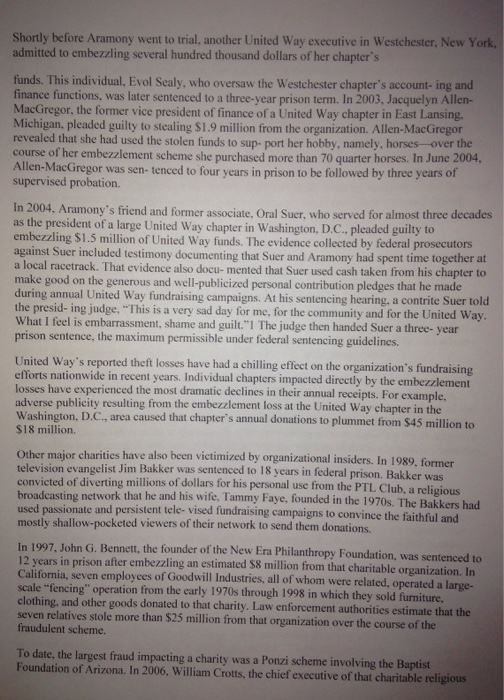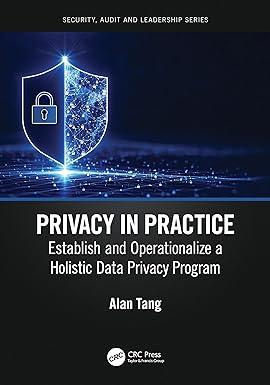CASE 3.3 United Way of America In 188 7, several of Denver's community and religious leaders established the Charity Organization Society. Du $20,000, which it then distributed to several local charities. The charity- of-charities fundraising ring its first year of operation, the organization raised a little more than oncept spread across the United States over the following decades. After several name changes the original Denver-based organization adopted the name United Way in 1 1963 United Way grew rapidly during the latter decades of the twentieth century, even- tual becoming the nation's largest charitable organization. In 2006, United Way raised dollars, more than double the charitable donations received that year by the Salvation Army, the four billion largest charitable organization. Each year, approximately 40,000 charities across the United States receive cash distribu- tions from United Way Football & Fraud For more than two decades beginning in the early 1970s, William Aramony served as the president of United Way of America. The Virginia-based United Way of America serves as the umbrella organization for the almost 1,400 local United Way chapters seattered across the United States. An alliance that Aramony negotiated with the National Football League (NFL) resulted in huge nationwide exposure for the United Way during every Sunday afternoon and Monday night NFL game. That exposure was largely responsible for the explosive growth that United Way realized during Aramony's tenure as president. In recent years, United Way has faced two major challenges that threaten its lead- ership position in the charitable sector. Over the past several decades, the number of charitable and other not- for-profit organizations in the United States has skyrock- eted. Currently, there are nearly two million registered tax-exempt organizations in the United States, the majority of which charities. Collectively, these organiza- t Registered charities alone raise more than $300 billion each year in donations from the public and private sector. The intense and growing competition for Americans' charitable donatio made it increasingly difficult for United Way to sustain the impressive growth that it real- i under William Aramony's leadership. ions employ one of every ten working Americans The second major challenge facing United Way is a loss of credibility suffered by the organization due to a series of embarrassing and highly publicized embezzle- mernt the early 1990s, federal prosecutors indicted William Aramony for embezzling millions of dollars of United Way funds. In 1995, a federal jury found Aramony guilty of more than two dozen of the individual fraud charges that had been filed against him. Aramony was later sentenced squandered United Way funds on lavish trips to Las Vegas, Europe, Africa, and other destinations. The 68-year-old Aramony reportedly used United Way funds to finance multi romantic relation- ships as well schemes. In to serve seven years in federal prison. Testimony during his trial revealed that he had











